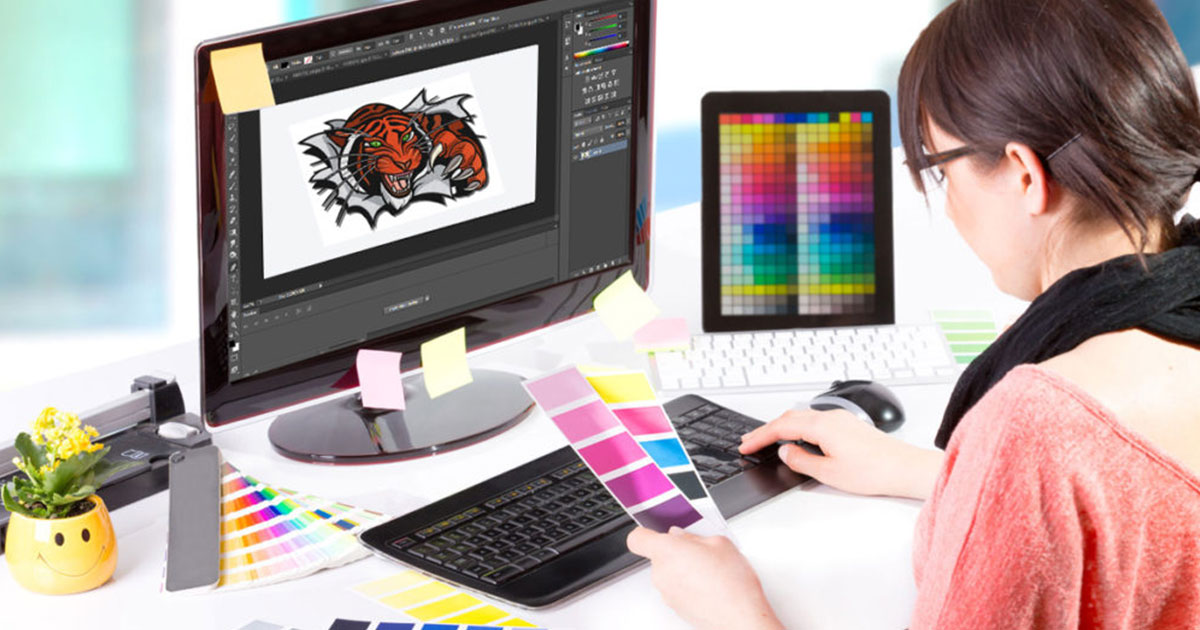Efficient Digitizing for Embroidery: Quick Turnaround
Efficient Digitizing for Embroidery: Quick Turnaround
Blog Article
Explore Different Kinds of Needlework Digitizing Methods
Needlework digitizing has advanced substantially over the years, using a myriad of strategies to bring styles to life in the electronic world. From the elaborate virtuosity of typical hand embroidery digitizing to the accuracy of the boxing technique, and the comfort of auto-digitizing software application programs, the alternatives are vast. The realm prolongs to a lot more innovative techniques like photorealistic embroidery digitizing and the remarkable realm of 3D embroidery digitizing. Each method brings a special collection of possibilities and challenges to the table, making the exploration of these techniques a compelling trip for those in the needlework world.
Standard Hand Needlework Digitizing
Standard hand needlework digitizing involves the process of converting elaborate hand-stitched styles into digital formats for device embroidery. This technique requires competent craftsmens to diligently analyze the handcrafted style and then use specialized software application to recreate it in a digital layout. Each stitch, shade, and information should be very carefully equated to make sure that the essence of the original hand needlework is protected in the digital variation.
Among the essential challenges of typical hand needlework digitizing is catching the complexities and subtleties of the handmade style. Digitizing for Embroidery. Artisans must possess a deep understanding of various embroidery strategies, such as satin stitch, chain stitch, and French knots, to precisely replicate these strategies in the digital realm. In addition, they need to have a keen eye for information to make certain that the digital design keeps the same degree of creativity and craftsmanship as the initial hand-stitched piece
Punching Strategy
To effortlessly shift from traditional hand needlework digitizing to the punching strategy, artisans have to now concentrate on converting the detailed electronic designs right into instructions that needlework machines can analyze. The punching method involves utilizing specialized software program to produce digital documents that include commands for the needlework machine to comply with. This procedure requires a deep understanding of not just the layout itself but likewise the capabilities and restrictions of the needlework machine.

Auto-Digitizing Software Application Programs
Embroidery digitizing has been reinvented by the development of auto-digitizing software programs, offering artisans with innovative tools to convert electronic layouts right into needlework maker guidelines effectively. Auto-digitizing software program programs make use of formulas to examine electronic pictures or vector data and produce embroidery designs automatically. These programs permit quick and exact conversion of detailed layouts into stitch patterns, saving time and effort for embroiderers.
Among the vital advantages of auto-digitizing software application is its easy to use interface, making it accessible to both newbies and seasoned digitizers. her latest blog These programs usually include features such as stitch editing and enhancing devices, thread color matching, and the capacity to sneak peek the final embroidered layout. Furthermore, auto-digitizing software application can deal with complex layouts with several colors and detailed information, producing high-quality needlework data suitable for numerous clothing and fabric projects.
While auto-digitizing software supplies comfort and efficiency, it is essential for individuals to understand the constraints of automated digitizing. Fine-tuning and hands-on adjustments might still be needed to achieve the wanted needlework quality, specifically when taking care of intricate or one-of-a-kind layouts. By leveraging the capabilities of auto-digitizing software program alongside hand-operated digitizing methods, artisans can boost their embroidery digitizing procedure and create stunning stitched items.
Photorealistic Embroidery Digitizing
Making use of sophisticated electronic imaging methods, accomplishing photorealistic cause needlework digitizing has come to be a sought-after skill amongst modern craftsmens. This strategy involves transforming high-resolution images right into intricate stitch patterns that carefully mimic the original style, resulting in embroidery items that exhibit realistic information and depth.
To achieve photorealistic embroidery digitizing, craftsmens have to have a keen eye for detail and a thorough understanding of how different stitch kinds and densities can affect the final result. By very carefully drawing up each shade and color in the photo, embroiderers can develop a digital file that guides the embroidery device to duplicate the nuances of the original photo precisely.
Photorealistic needlework digitizing is particularly preferred in developing personalized designs for apparel, home style, and art pieces where capturing the significance of a picture or art work is crucial. This technique allows artisans to transform memories, landscapes, pictures, and detailed art work right into magnificent stitched work of arts click here to find out more that display a mix of typical workmanship and cutting-edge modern technology.
3D Needlework Digitizing
With the improvement of digital imaging strategies in attaining photorealistic outcomes in needlework digitizing, the exploration of 'D Embroidery Digitizing' supplies a brand-new dimension to the complexities of design duplication. 'D Needlework Digitizing' describes the three-dimensional digitizing method that adds deepness and appearance to embroidery designs, developing an extra sensible and visually enticing end product. This strategy uses software application that imitates the effect of light and darkness on the needlework style, enhancing its general visual influence.
One of the Learn More key advantages of 'D Embroidery Digitizing' is its capacity to make styles look more realistic and dynamic. By including depth to the needlework design, the end product shows up much more realistic and exciting (Digitizing for Embroidery). Additionally, this strategy enables for even more innovative freedom in style execution, making it possible for embroiderers to explore different structures and effects that were formerly challenging to attain
Conclusion

Report this page